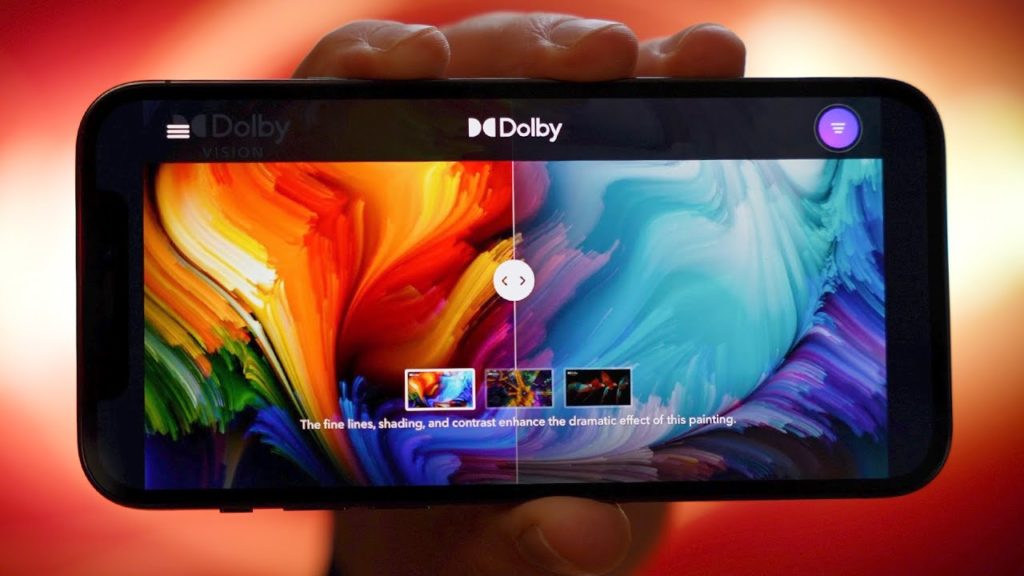How the New iPhone 12 Will Revolutionize Content and Video Production
We’ve mentioned before that the latest iPhone models — the iPhone 12 series — offer benefits for creatives and filmmakers of all experience levels. The iPhone 12 Pro and Pro Max in particular offer quite an array of advantages: their improved camera systems and filming capabilities open the door to a means of revolutionizing content creation and video production. And with other advantages like improved processing speeds and the ability to tap into 5G networks, the powerful technology that they offer can benefit creators of all kinds. We’ve rounded up the parts of the iPhone 12 series that we think will help revolutionize the way content is currently produced.
The iPhone 12 Pro and Pro Max Camera Systems

The iPhone 12 models boast a few significant upgrades to their camera systems. While the main camera system has faster glass and the Ultra Wide lens provides 2x optical zoom, all of the cameras now have Night Vision integrated. Along with Deep Fusion, these enhancements make a noticeable difference with regard to evening photos and videos by improving texture and increasing clarity and sharpness. In short, it’s the best camera system we’ve seen on an iPhone — these changes combined allow for longer days of shooting and improved content quality.
But there are other camera changes that have creators talking —Lidar and HDR/Dolby Vision capabilities.
The iPhone 12 and Lidar

In an interview with The Hollywood Reporter, Ben Grossman, CEO of Magnopus, stated that “The new iPhone with Lidar, HDR, and the other camera improvements, is a visual effect artist’s dream.” He noted that the iPhone 12 offers the ability to combine what would normally be “thousands of dollars’” worth of equipment into one tool that is capable harnessing powerful processing power and cloud computing. “It’s a bit more futuristic than I’d thought possible,” he added.
The capabilities Grossman mentions — Lidar and HDR — do open up the possibility for a change in the workflow of content creation and filmmaking.
Lidar stands for “Light Detection and Ranging.” According to NOAA, it’s a “remote sensing method that uses light in the form of pulsed laser to measure ranges.” Essentially, it can scan your surroundings and create a 3D image of them. While the iPhone doesn’t come with any apps specifically for Lidar usage, there are plenty on the market, like Canvas, that allow you to experience this powerful technology. With apps like this one, users can scan a room and view what it would look like with a different wallpaper or a new sofa. With regard to filmmaking, experts can harness this capability in a variety of ways. It can help with set design, prop usage, and other visual effects needs. Plus, it has the ability to be utilized for Augmented Reality, and, likely down the road, Virtual Reality.
The iPhone 12 and HDR/Dolby Vision

Dolby Vision is arguably the most significant change featured on the iPhone 12 models. As a type of HDR format, Dolby Vision allows the iPhone to automatically adjust metadata in real time, which we discuss in depth here. This is significant for filmmakers in particular because, traditionally, metadata has been added during the post-production process. Apple boasts that Dolby Vision recording is “something no pro movie camera, let alone any other phone, can do.” All of this to say: the iPhone 12’s powerful processing ability to record in Dolby Vision can help consolidate what has routinely been a much longer process.
With that said, there are some caveats when it comes to utilizing the video recorded in Dolby Vision. Because this technology is more advanced than many other pieces of software and hardware, some devices and smart TVs won’t support Apple’s version of Dolby Vision. It may either not play at all or look distorted. However, as technology continues to progress, most experts think that these devices will soon catch up and it will become commonplace for most people to own the correct Dolby Vision-supported equipment.
The iPhone 12 Offers Apple ProRAW

Another way in which the iPhone 12 offers a big change for content creation, and photography in particular in this instance, is the integration of Apple ProRAW into the iPhone 12 models. Traditionally, iPhones work to create the “best” version of the photo you’re taking right off the cuff. This meant offering pre-edited images with automatic changes to sharpness, saturation, white balance, and more. This means that the iPhone is smart enough to “edit” your photo for you. But now that many professionals use the iPhone for serious photography, there’s a need for raw formatting. This simply means the bare-bones image as it truly is, without the extra processing.
Many serious photographers desire this option as it allows them to make the edits they desire completely on their own accord — nothing is done for you. Apple’s ProRAW option provides this capability. Instead of the image saving as a JPEG, it is saved as a DNG file, which is bigger but allows for an editable canvas. Plus, edits can be made right on the phone itself in the camera roll. Alternatively, you can edit in apps like Halide or Adobe Lightroom. Having an iPhone that can produce a raw file opens up a realm of possibilities when it comes to shooting with an iPhone instead of a traditional camera.
The iPhone 12’s 5G Capabilities

The iPhone 12 series is the first iPhone series that offers 5G capabilities. The caveat here is that 5G isn’t available everywhere yet. But in larger cities, it’s likely that users can use the iPhone 12 to tap into and experience the ultra-fast speed that it offers. For filmmakers and content creators, this means an improved workflow due to the improved speed alone. As Michael Cioni of Frame.io put it, 5G offers “a gateway to eventually virtualize every device on set, even shooting original camera RAW files directly into the cloud.” We agree — the potential that 5G offers to cut down on lag time and delays due to processing speeds will absolutely make an impact on workflow for creators of all kinds. And with must of post-production work taking place remotely these days, latency and speed is more important than ever.
The iPhone 12 makes an incredible tool to add to the creative arsenal of filmmakers and content creators. In one small package, its significant upgrades have the ability to completely change the workflow that we currently utilize. We’re looking forward to watching it happen.
About eTech Rentals
eTech Rentals a national technology solutions provider located in Southern California specializing in rental technology integration. eTech is committed to long-standing client relationships and consistent, reliable local service, trusted by expert event planners, film and entertainment production companies, and businesses in California and nationwide.
Learn more about eTech Rentals at: https://www.etechrentals.com/
